Research progress on sedimentary geology of Mesoproterozoic strata in the Helan Mountains
The Mesoproterozoic interval postdates the Great Oxidation Event, and is considered to be an interval of relative stasis in terms of global tectonics, climate states, and marine geochemical conditions, particularly with regard to the low variance of carbon isotopes. As a result, this interval is referred to as the “boring billion”, although the biosphere changed considerably during this time with the evolution of red and green algae, fungi, and calcifying cyanobacteria. In addition, stromatolite abundance and diversity in the oceans more than doubled in the Mesoproterozoic. The “boring billion” may be, in fact, not “boring”, which attracts persistent studies.
Prof. CHEN Jitao from State Key Laboratory of Palaeobiology and Stratigraphy (SKLPS) started working on Mesoproterozoic from 2014 when he was invited twice by A. Knoll and J. Grotzinger to attend the Agouron Field School of Geobiology and collaborative research in Van Horn area, Texas.
Recently, CHEN Jitao together with his colleagues from Nanjing Institute of Geology and Palaeontology, and US have been working on the well-preserved Mesoproterozoic strata of the Helan Mountains in the western margin of the North China Block (NCB). Based on their integrated works, they (1) reconstruct of the depositional history of a coarse redbed succession, (2) analyze a diverse suite of carbonate facies that include remarkably well preserved stromatolitic assemblages, (3) provide carbon and oxygen isotopic profiles for these strata, (4) present the first recovery of trilobites from Cambrian strata at this site that demonstrate the very specific age of the overlying strata, and (5) provide detrital zircon geochronological data for a suite of samples collected from Paleoproterozoic basement, Mesoproterozoic strata, and overlying Cambrian rocks.
The study suggests the significant spatial distribution of approximately age-equivalent strata of the Mesoproterozoic Wangquankou carbonate in the NCB were most likely deposited on stable carbonate platform, rather than in an aulacogen. Carbonate carbon isotopes and detrital zircon ages provide a maximum depositional age of ~1610 Ma and prior to 1000–1200 Ma for the Wangquankou Formation. Detrital zircon geochronologic data also show a consistent provenance throughout the Mesoproterozoic section, and for both Middle Cambrian and Middle Ordovician strata, which could suggest a remarkable paucity of major igneous events in this western part of the NCB over a considerable time span (approximately 1000 Ma).
The work provides fundamental basis for future studies on diverse stromatolites and biogeochemistry of the Mesoproterozoic. The study was recently published in the international journal Precambrian Research.
This research was supported by the Strategic Priority Research Program of Chinese Academy of Sciences and the National Natural Science Foundation of China, and National Aeronautics and Space Administration and National Science Foundation of US.
Reference::Zhang, T., Myrow, P.M., Fike, D.A., McKenzie, N.R. Yuan, J., Zhu, X., Li, W., Chen, J.*, 2020. Sedimentology, stratigraphy, and detrital zircon geochronology of Mesoproterozoic strata in the northern Helan Mountains, western margin of the North China Block. Precambrian Research, 343, 105730. https://doi.org/10.1016/j.precamres.2020.105730
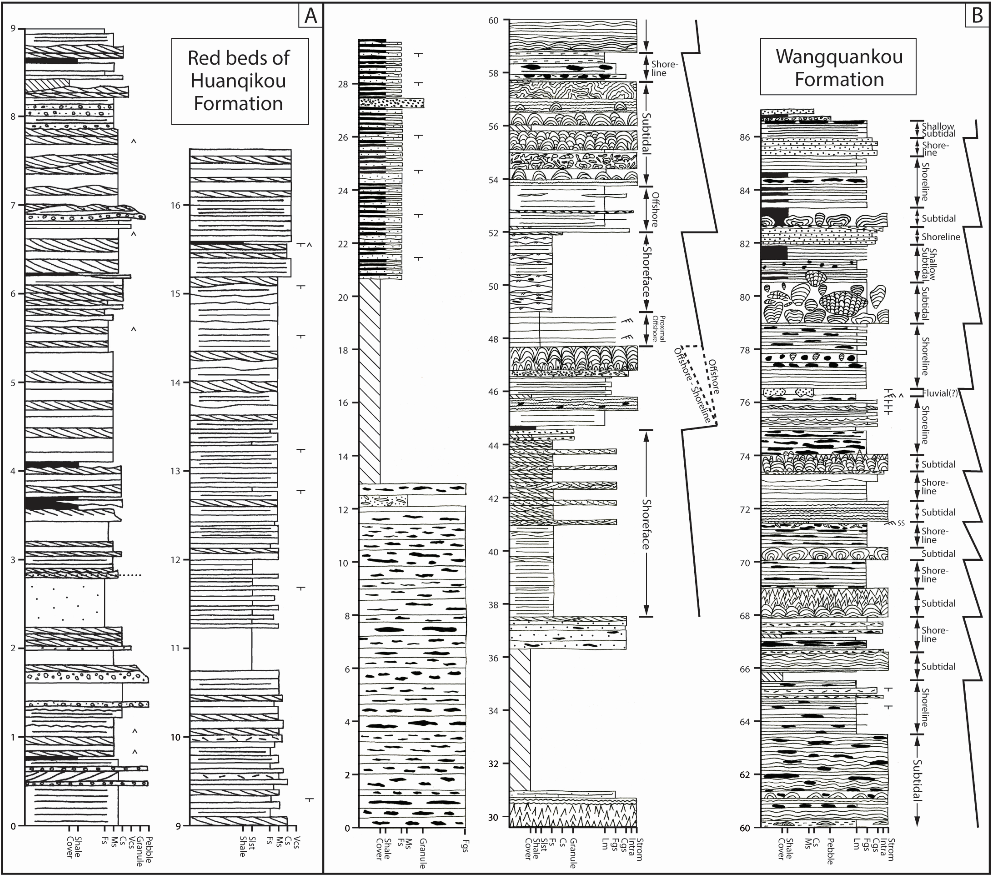
Detailed sedimentary logs of the Mesoproterozoic redbeds of the Huangqikou Formation and the overlying carbonate succession of the Wangquankou Formation in the Helan Mountains, North China
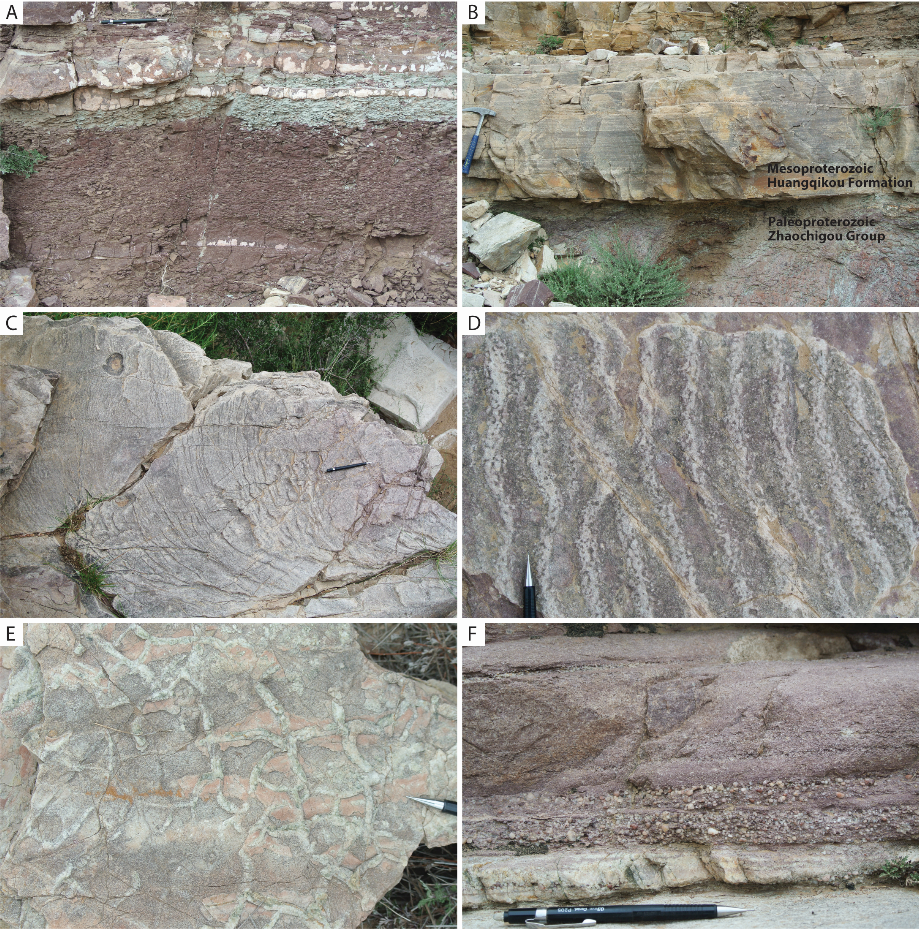
Representative facies of the Mesoproterozoic redbeds of the Huangqikou Formation
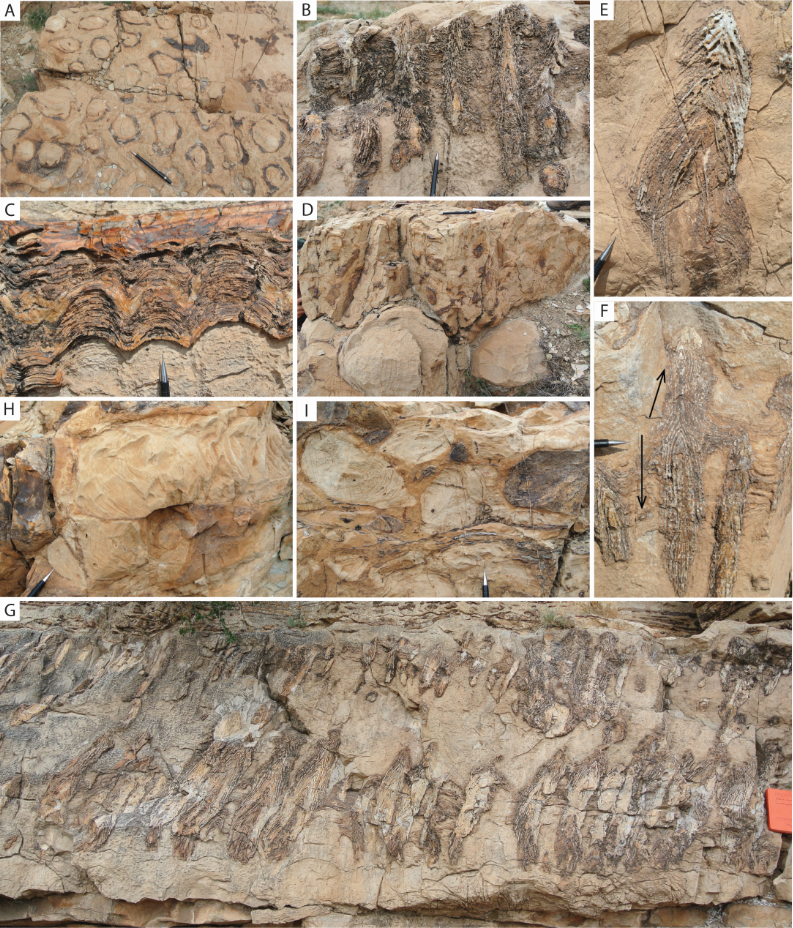
Diverse Mesoproterozoic stromatolites of the Wangquankou Formation
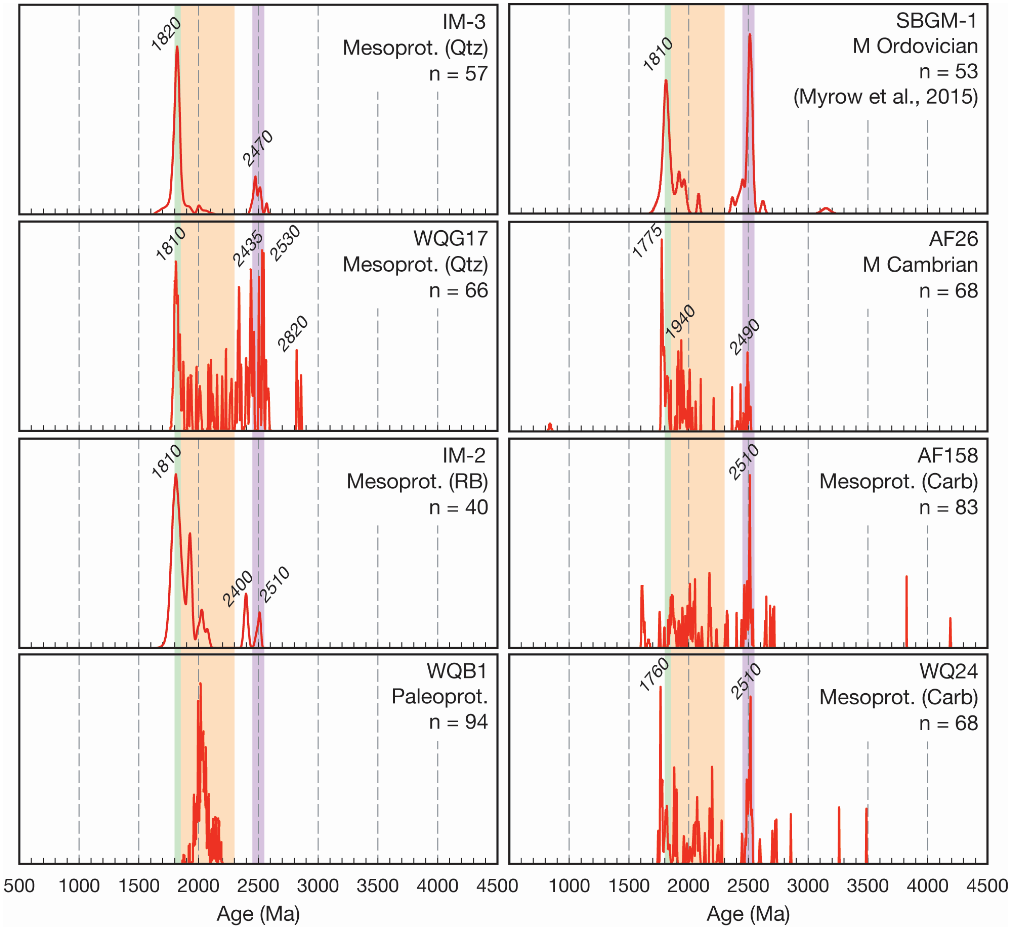
Detrital zircon geochronologic results in the western margin of the North China Block
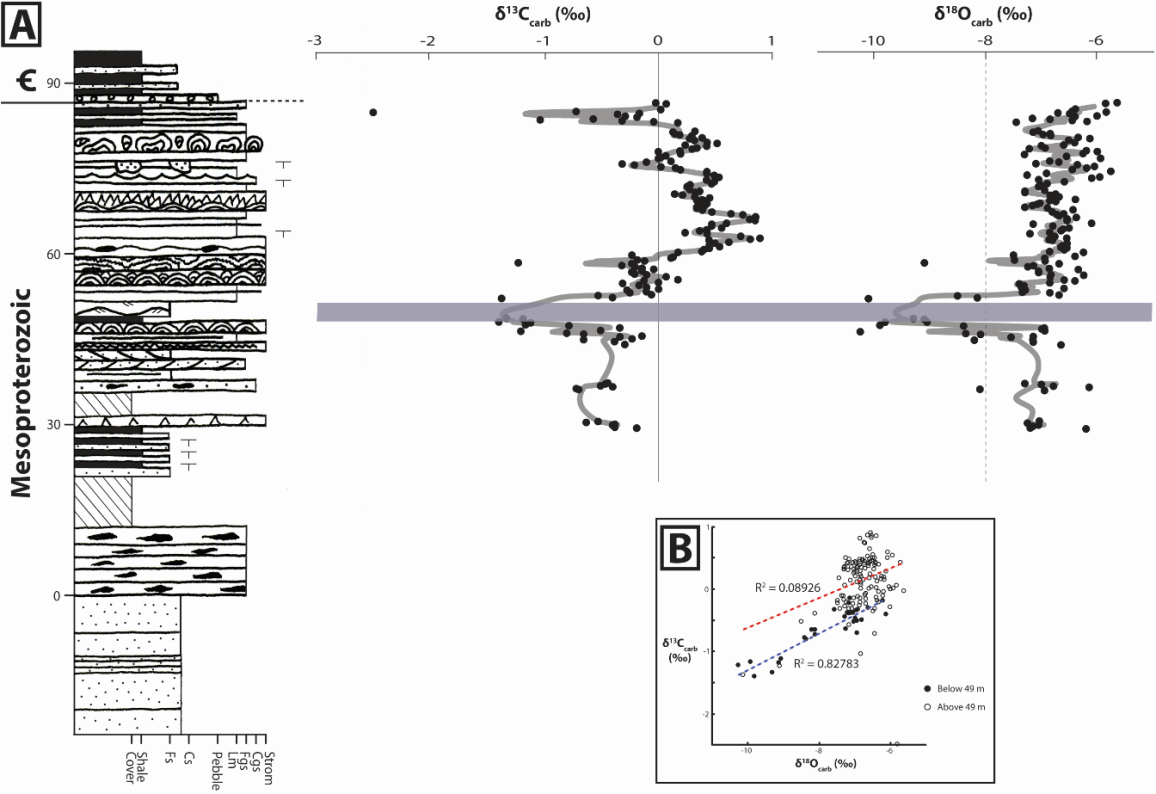
Carbonate carbon and oxygen isotopes of the Wangquankou Formation
Downfile:

